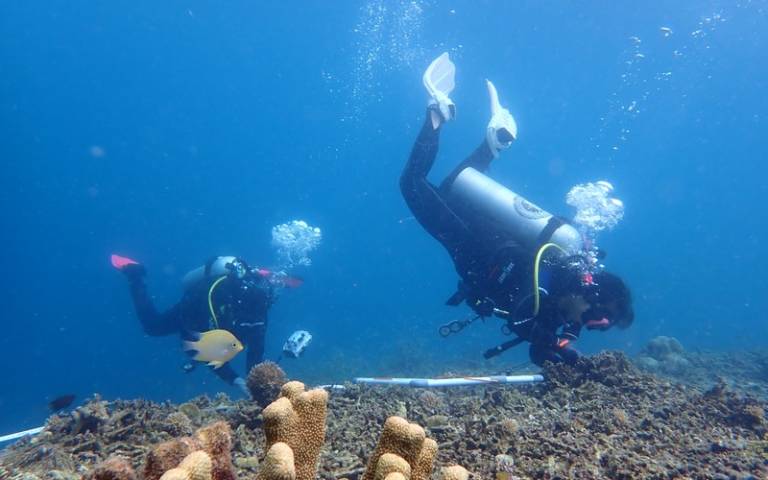Measuring the success of reef restoration
A collaborative project including UCL scientists is generating 3D models of coral reefs in Indonesia to help measure ecosystem characteristics and to understand the success of coral reef restoration.

17 August 2022
Coral reefs provide food, income opportunities and protection from tropical storms for hundreds of millions of people worldwide. In recent decades many of the world’s largest reefs have been decimated by the effects of over-fishing, pollution and global warming.
Intercontinental collaborations between scientists, local reef experts and others are helping to restore the reefs. One restoration technique involves placing star-shaped structures seeded with coral on the seabed, to encourage a wide variety of corals and fish to return.
The world’s largest coral restoration programme is underway at the Hope Reef in Indonesia’s Spermonde Archipelago. As the reefs are brought back to life, research projects are monitoring the progress of the restoration and identifying opportunities for improvement.
Scientists from UCL’s Biome Health Project are collaborating with marine scientists, reef restoration experts and students at the IPB University, Indonesia, and Lancaster University, UK, to understand the complexities of the reef’s 3D structure and how the new ecosystems develop. The project is being co-produced with local experts and communities and is already supporting the career development of female scientists in Indonesia who are underrepresented in their country.
The international team is using a technique called photogrammetry to create and analyse 3D scaled digital models of the reef from overlapping photographs. Using these models, experts, based anywhere in the world, can explore the complexities of the coral’s 3D structure and the corals and fish within the reef. The information will help to ensure that future restoration projects maximise biodiversity within coral ecosystems, as well as identifying changes that might signal their decline.
“Using photogrammetry we can critically evaluate the effectiveness of one of the world’s most popular coral restoration techniques, which uses steel star-shaped structures seeded with coral fragments,” explains Jason Lynch, a PhD student in UCL Geography, who is leading this component of the project at UCL.
“We will identify what works and what doesn’t in current restoration practice, guiding new ways to rebuild reefs that encourage natural ecosystems to establish and flourish,” he adds.
In a pilot project, the team has reconstructed 18 sites into scaled 3D digital models, measuring 20 x 50m and comprising healthy, restored and degraded reef sites. Now, with funding from the UCL Grand Challenges SDGs: Pathways to Achievement fund to facilitate the international collaboration, the project is being expanded. Ultimately, the team will measure restoration success and will identify trends to improve restoration practices in future.
 Close
Close


